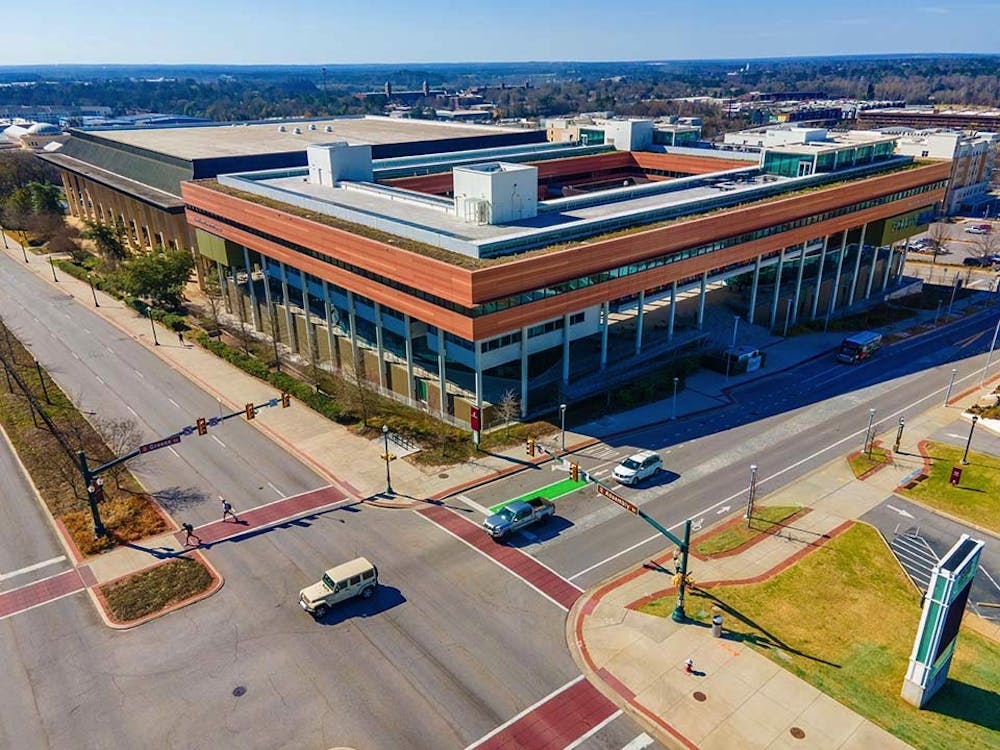In the process of expanding the university, USC gentrified historically Black neighborhoods and contributed to depleting affordable housing since the 1960s. The university needs to do more to help the residents of Columbia, to donate some of the land it acquired back and to create more dorms in the central campus area.
Gentrification is when wealthy people or institutions use cheap land to make a profit by charging higher housing and rent rates, thus displacing lower-earning residents from the neighborhood, according to the National Low Income Housing Coalition. Urban renewal is when land is redeveloped to clear out slum areas for commercial areas, according to COLAtoday. As a result, many Black neighborhoods were targeted in the urban renewal process.
Municipal leaders thought slum areas were a threat to Columbia's future development, and USC took the opportunity to expand its land and displace many Black neighborhoods such as Wheeler Hill and Ward One, according to USC alumna Sophie Kahler. Kahler wrote her senior thesis on the evolution of Columbia's neighborhoods.
"For many years it has been the goal of the University and the City of Columbia to attempt to wipe out the entire slum area of approximately twelve blocks known as Wheeler Hill," former university President Thomas F. Jones said in part of Kahler's thesis.
USC started gentrifying Columbia's neighborhoods in the 1960s, when the university bought a massive amount of land in Wheeler Hill for student housing. Many of the existing buildings were destroyed, and as they were rebuilt, the prices of housing soared — making it unaffordable for residents who lived in the neighborhood at the time. The area is currently home to Bates House, which will be torn down to make room for Campus Village, a recent construction project by the university.
This caused a massive displacement of homeowners and business owners who settled in the area and removed a thriving and diverse community in Columbia due to USC’s expansion, according to Kahler.
Where the once-vibrant Ward One neighborhood used to be is now where we know the Strom Thurmond Wellness and Fitness Center and Darla Moore School of Business to be.
“Through an urban renewal campaign of the '60s, those areas were acquired using eminent domain methods, arguing that the acquisition of these properties was in the public interest, meaning the interest of the university," Bobby Donaldson, associate professor of history and leader for the Center of Civil Rights History and Research, said during an interview about campus expansion with The Daily Gamecock last spring.
The State published proof of the increase in housing prices in its piece about the rising number of students living in the Rosewood Drive area: "In the past five years, average home values have increased by 27% in Edisto Court, 20% in South Waccamaw and 19% in Central Rosewood. That’s compared to a 17% increase for the city as a whole.”
The more USC students rent out off-campus apartments, the more longtime residents in the area are displaced. The university needs to be doing more to help the residents of Columbia. USC needs to use the large portion of Columbia that it already owns and stop spreading out across the city into areas where Columbia residents live.
According to USC's website and a statement from university spokesperson Jeff Stensland to The State, there are only 7,300 beds available for 27,750 undergraduate students. Since the dorms cannot accommodate most students, students have to find housing elsewhere in Columbia. This causes an increase in prices, as some students are willing to pay rent at premium rates, which causes the overall housing rates to increase and forces residents to move out due to the unaffordable options for them.
If USC doesn’t take further action to help reduce gentrification within the city, lower income families and people of color will continue to be disproportionately displaced by the university's expansion.

